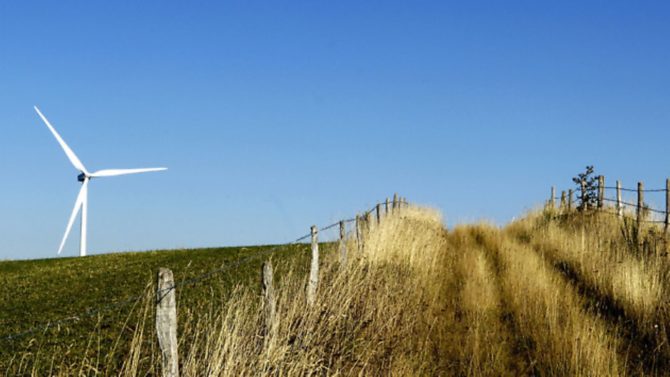Green tax credits

Whether you need a new boiler or want to improve the insulation in your home, it’s never been easier to be green

Certain types of materials and equipment used to make your French home more environmentally friendly can be written off against French income tax.
This is one of the ways that the government encourages greener lifestyles to help with its commitments to cutting greenhouse gas emissions and making greater use of renewable energy sources as it pledged to do at several international climate conferences.
Since it was made obligatory for all estate agents to display the energy-efficiency grading of homes it has become all the more desirable for your home to be ‘greener’, as this can directly affect its value and attractiveness should you wish to rent or sell.
It is a good idea to take advantage of the green tax rebates scheme sooner rather than later, as tax reductions have been altered several times already. Rebates for solar photovoltaic panels, for example, now attract an 11% credit compared to 22% in 2011 and 50% until autumn 2010.
There is some good news though, as many items now benefit from higher than usual rates (up to 40%) if you have at least two different types of eligible installation put in at the same time. This scheme has been extended for three years until the end of 2015 (originally, it was due to end last year).
Tax credits can also now, once again, be combined with the zero-interest eco-prêt loan, under certain circumstances, which has not always been possible. Here is an overview of how the credits work.
THE GREEN TAX CREDIT
Green tax credits were introduced in 2005 and will continue until the end of 2015, apart from for new-build homes.
Tweaks have been made to the way they work over the years, including changes to the products that qualify and the amount of tax you can offset against certain items.
BASIC INFORMATION
Carrying out renovation or improvement work such as fitting insulation, a wood-burning stove or a condensing boiler gives you the right to ask for a tax credit.
This is a sum deducted from your income tax bill on the income you earned in the same year that you had the work done.
The main difference between a tax ‘reduction’ and a tax ‘credit’ is that with a credit, if you fall below the income threshold to pay French income tax, you are eligible for a payment via a cheque or directly into a French bank account. However, in order to benefit from this arrangement you will be required to fill out a French income tax form for the year in question.
WHO IT IS FOR
1) People who rent their home, owner-occupiers, people who let out a home or people who live in a home free of charge
2) People who are fiscally-resident in France
ELIGIBLE PROPERTIES
1) A main residence, either a house or flat
2) A residence that you let out to someone else unfurnished. In this case, you should intend to rent it out as your tenant’s main home for a period of at least five years.
You should note that if you are letting out your home you cannot both opt for the tax credit and the option of an expenses deduction from your income from property (revenus fonciers) for the same work.
3) Properties that are at least two years old get credits for insulation, regulating equipment, condensing or microgeneration boilers and for an energy efficiency check.
The home can be either new or old for equipment using renewable energies, heat pumps and being linked to a district heating system.
Properties built after 1 January 2011 cannot benefit from the scheme because they are meant to be built at a very high standard of energy efficiency.
HOW IT WORKS
On the whole, the credit is for materials or equipment, not for labour. The exception for this is installing wall/roof insulation or the underground heat exchanger that forms part of a geothermal heat pump.
The materials or equipment must be installed in the home by a professional firm, which should be the same firm that supplied them. In the case of new-build homes they should be installed by the builder or seller.
It is important that you keep the facture (invoice) for the work. This must clearly state the cost of materials, with VAT included (fourniture des matériels, TVA comprise). It should also give the relevant technical specs for the material to ensure it meets the requirements for the credit. These vary according to the kind of material/equipment and are intended to make sure that the tax credit is only given for installations that will have a significant effect on the energy efficiency of your home. The facture should also state the address of the property.
Having eco-friendly materials professionally installed can often work out cheaper than DIY, because you may benefit from the tax credit and this kind of home improvement is also often eligible for a reduced rate of VAT (from 19.6% to 7%).
REBATES AVAILABLE
There is a ceiling on the cost of work (VAT included) that is eligible for tax credits. This is €8,000 for a single person or €16,000 for a couple who make a joint tax return, with an additional €400 for each dependent.
For those who let out a property to someone else the ceiling is €8,000 per home, with a limit of three homes per year. If the cost goes above this, the credit will apply only up to the ceiling. The ceiling applies over a period of five consecutive years between 1 January 2005 and 31 December 2015.
This means that if you are a single person and you use up the €8,000 in one specific year, you cannot have a credit again for five years (for landlords the period starts at 1 January 2009). If a couple did €10,000 of work in 2007 and then €6,000 in 2009, they would not be eligible again until 2012.
The credit is calculated against eligible expenses at percentages varying by type of material/equipment. Any other grants you are given towards the same material will be deducted from the eligible expenses, e.g. those from your local authority or the Agence Nationale de l’Habitat.
ELIGIBLE EQUIPMENT
The precise requirements can vary according to factors such as where the materials are used in the home (notably for insulation).
There are also certain quality labels to look out for. Check with the installers that the materials are suitable for a credit – this should be enough if you use a well-reputed and established firm.
Generally speaking, the specs refer to quality products, but which are widely available on the market. However, a product that may seem to be at a bargain price may not be efficient enough to qualify.
GET FREE ADVICE
A network called INFO ENERGIE, specialists in energy saving, can give free advice on home improvements and how to finance them. These are run by Ademe, the agency for improving environmental awareness. Find your nearest branch at www.infoenergie.org.
The Adil network – advisors on all matters about accommodation – can also help with understanding tax credits. Visit www.anil.org/votre-adil.
Extract from a range of helpguides about living and working in France produced by The Connexion, France’s English-language newspaper. Sign up for their free newsletters at www.connexionfrance.com and www.moving-france.com
Share to: Facebook Twitter LinkedIn Email


